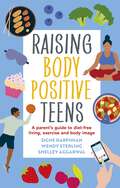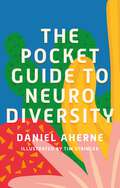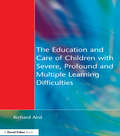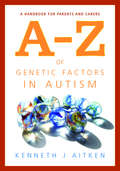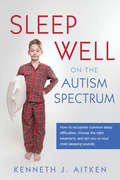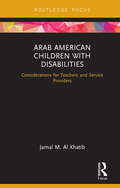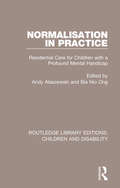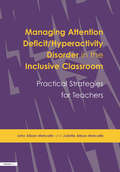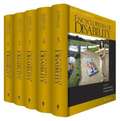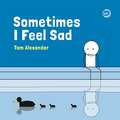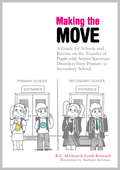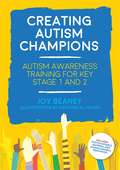- Table View
- List View
Raising Body Positive Teens: A Parent’s Guide to Diet-Free Living, Exercise, and Body Image
by Shelley Aggarwal Signe Darpinian Wendy SterlingIn a world fraught with diet-culture and weight stigma, many parents worry about their child's relationship with their body and food. This down-to-earth guide is an invaluable resource allowing parents to take proactive actions in promoting a friendship with food, and preventative actions to minimize the risk factors for the development of eating disorders, particularly when early signs of disordered eating, excessive exercise, or body dissatisfaction have been noticed. It provides clear strategies and tools with a practical focus to gently encourage parents and teens to have a healthy relationship with food and exercise by centralizing joy and health. Coming from a therapist, a dietician, and an adolescent medicine physician, with insightful case studies from an array of young people from different backgrounds, this multidisciplinary author team delivers friendly, strategic guidance based in a wealth of expertise.
The Pocket Guide to Neurodiversity
by Daniel AherneAt least one in seven people are thought to be neurodivergent. So what exactly is neurodiversity? What does 'executive functioning' mean? What are 'spiky profiles'?In this simple guide, expert speaker and trainer Daniel Aherne provides a clear introduction to neurodiversity and the four most common neurodivergent identities of autism, ADHD, dyslexia and dyspraxia. Using an analogy of a cactus needing a desert to grow in, he emphasises the importance of getting the environment right for neurodivergent people, rather than expecting them to adapt to the neurotypical world. Daniel, who himself has ADHD, also explains how neurodivergent people often have great strengths alongside areas of difficulty, and writes about the interplay between diagnoses, as well as unpacking tricky concepts such as working memory, sensory processing, communication differences and more.Busting common misconceptions and setting out simple tips and guidance for supporting the neurodivergent people around you, whether among your family, friends or at your school, college or workplace - or if you yourself are ND and want to improve the understanding of others - this essential guide will help us all celebrate neurodiversity and foster more inclusive communities. .
The Education and Care of Children with Severe, Profound and Multiple Learning Disabilities: Musical Activities to Develop Basic Skills
by Richard AirdThis is a practical guide to managing the whole curriculum for children with severe learning difficulties (SLD). Crucial guidance and effective strategies are provided on how to reconcile the rights, needs and aspirations of such children in light of recent national trends and QCA guidelines.
The Education and Care of Children with Severe, Profound and Multiple Learning Disabilities: Musical Activities to Develop Basic Skills
by Richard AirdThis is a practical guide to managing the whole curriculum for children with severe learning difficulties (SLD). Crucial guidance and effective strategies are provided on how to reconcile the rights, needs and aspirations of such children in light of recent national trends and QCA guidelines.
An A-Z of Genetic Factors in Autism: A Handbook for Parents and Carers
by Kenneth AitkenThe concept of a single condition known as 'autism' is quickly becoming outdated, and is now understood to be an umbrella term for a variety of predominantly genetic conditions. This can be confusing for parents of children who have been diagnosed as having an 'autism spectrum disorder'. An A-Z of Genetic Factors in Autism provides parents with a complete overview of the main genetic disorders associated with autism, including those linked to growth differences, cardiovascular issues, neurodevelopmental problems, immune dysfunction, gastrointestinal disturbances and epilepsy. Kenneth Aitken demystifies the umbrella term 'autism' by alphabetically listing these conditions along with information about how common they are, their causes, signs, and symptoms, and for many, appropriate methods of treatment and management. Information on support groups and sources of further information are also included to help parents obtain any additional support they need, and keep up to date with new developments in research and practice. This is a must-have book for any parent or carer who feels confused by their child's diagnosis, or who seeks a better understanding of the many genetic conditions linked to autism.
An A-Z of Genetic Factors in Autism: A Handbook for Parents and Carers (PDF)
by Kenneth AitkenThe concept of a single condition known as 'autism' is quickly becoming outdated, and is now understood to be an umbrella term for a variety of predominantly genetic conditions. This can be confusing for parents of children who have been diagnosed as having an 'autism spectrum disorder'. An A-Z of Genetic Factors in Autism provides parents with a complete overview of the main genetic disorders associated with autism, including those linked to growth differences, cardiovascular issues, neurodevelopmental problems, immune dysfunction, gastrointestinal disturbances and epilepsy. Kenneth Aitken demystifies the umbrella term 'autism' by alphabetically listing these conditions along with information about how common they are, their causes, signs, and symptoms, and for many, appropriate methods of treatment and management. Information on support groups and sources of further information are also included to help parents obtain any additional support they need, and keep up to date with new developments in research and practice. This is a must-have book for any parent or carer who feels confused by their child's diagnosis, or who seeks a better understanding of the many genetic conditions linked to autism.
Sleep Well on the Autism Spectrum: How to recognise common sleep difficulties, choose the right treatment, and get you or your child sleeping soundly
by Kenneth AitkenWhy are sleep disorders more common in individuals with autism spectrum disorders (ASDs), and how can parents recognise the signs and symptoms? Which treatments are most effective, how easy are they to implement and how successful can they be? Full of helpful information and practical advice, this comprehensive guide introduces the most common sleep issues in children with ASDs, describing both mainstream and complementary options for treatment, what is involved and the outcomes that can be expected. The author describes common underlying conditions that might lead to sleep difficulties, including genetic conditions, diet and physical factors, explaining how parents can identify these. Various issues that can affect sleep are explored, including night terrors, teeth grinding, bedwetting and sleepwalking, and practical solutions are given. This is essential reading for parents of children and teenagers on the autism spectrum who have difficulties associated with sleeping, and will also be of great help to all individuals with ASDs who experience sleep problems.
Sleep Well on the Autism Spectrum: How to recognise common sleep difficulties, choose the right treatment, and get you or your child sleeping soundly (PDF)
by Kenneth AitkenWhy are sleep disorders more common in individuals with autism spectrum disorders (ASDs), and how can parents recognise the signs and symptoms? Which treatments are most effective, how easy are they to implement and how successful can they be? Full of helpful information and practical advice, this comprehensive guide introduces the most common sleep issues in children with ASDs, describing both mainstream and complementary options for treatment, what is involved and the outcomes that can be expected. The author describes common underlying conditions that might lead to sleep difficulties, including genetic conditions, diet and physical factors, explaining how parents can identify these. Various issues that can affect sleep are explored, including night terrors, teeth grinding, bedwetting and sleepwalking, and practical solutions are given. This is essential reading for parents of children and teenagers on the autism spectrum who have difficulties associated with sleeping, and will also be of great help to all individuals with ASDs who experience sleep problems.
Arab American Children with Disabilities: Considerations for Teachers and Service Providers
by Jamal M. Al KhatibDespite a proliferation of special education literature on racial minorities over the past three decades, research and writing on Arab American children with disabilities remain remarkably sparse. This book fills that gap by promoting culturally appropriate services for Arab American children with disabilities. Special education and service providers in the U.S.—including school psychologists, rehabilitation counselors, and social workers—are increasingly likely to work with Arab Americans with disabilities. By focusing on this marginalized minority population, Al Khatib provides much-needed context and direction for service providers and researchers working with the Arab American community. Offering an overview of special education and the rights guaranteed under the Individuals with Disabilities Education Act (IDEA), this book also helps Arab American families understand the special education process and advocate for their children.
Arab American Children with Disabilities: Considerations for Teachers and Service Providers
by Jamal M. Al KhatibDespite a proliferation of special education literature on racial minorities over the past three decades, research and writing on Arab American children with disabilities remain remarkably sparse. This book fills that gap by promoting culturally appropriate services for Arab American children with disabilities. Special education and service providers in the U.S.—including school psychologists, rehabilitation counselors, and social workers—are increasingly likely to work with Arab Americans with disabilities. By focusing on this marginalized minority population, Al Khatib provides much-needed context and direction for service providers and researchers working with the Arab American community. Offering an overview of special education and the rights guaranteed under the Individuals with Disabilities Education Act (IDEA), this book also helps Arab American families understand the special education process and advocate for their children.
Normalisation in Practice: Residential Care for Children with a Profound Mental Handicap (Routledge Library Editions: Children and Disability #1)
by Andy Alaszewski Bie Nio OngFirst published in 1990, this book was the first informed study to focus on care within the voluntary sector. Written with the child in mind, it is a sensitive work which explores the administration, strategy, and problems facing carers in children’s homes, at that time. Centring on small, community-based facilities, the authors discuss the processes involved in setting up and running such facilities. They examine the difficulties of evaluating progressive services that are influenced by the philosophy of normalisation, and highlight the lessons from which other providers of services are able to learn. Written by experienced researchers with contributions from service managers, Normalisation in Practice offers pragmatic advice on managing innovation efficiently without neglecting the needs of the child. Detailed interviews are combined with theoretical insight to provide an important guide for students and practitioners and a model for academics undertaking evaluative research. Although written at the start of the 1990s, this book contains discussions and material that are still very relevant to the subject today.
Normalisation in Practice: Residential Care for Children with a Profound Mental Handicap (Routledge Library Editions: Children and Disability)
by Andy Alaszewski Pauline Bn OngFirst published in 1990, this book was the first informed study to focus on care within the voluntary sector. Written with the child in mind, it is a sensitive work which explores the administration, strategy, and problems facing carers in children’s homes, at that time. Centring on small, community-based facilities, the authors discuss the processes involved in setting up and running such facilities. They examine the difficulties of evaluating progressive services that are influenced by the philosophy of normalisation, and highlight the lessons from which other providers of services are able to learn. Written by experienced researchers with contributions from service managers, Normalisation in Practice offers pragmatic advice on managing innovation efficiently without neglecting the needs of the child. Detailed interviews are combined with theoretical insight to provide an important guide for students and practitioners and a model for academics undertaking evaluative research. Although written at the start of the 1990s, this book contains discussions and material that are still very relevant to the subject today.
Managing Attention Deficit/Hyperactivity Disorder in the Inclusive Classroom: Practical Strategies
by John Alban-Metcalfe Juliette Alban-MetcalfeThis book provides commonsense information and insights into the condition, and considers the: · key features of AD/HD and which warning signs to watch out for · educational implications for children diagnosed · pros and cons of using medication · case studies which demonstrate the successful and effective inclusion of children with AD/HD into mainstream classrooms · ways in which parents, teachers and schools can co-operate with other agencies to ensure best provision for the child The authors also provide guidance on writing Individual Education Plans, clear explanations of the statementing process and a discussion on the implications of whole school planning and multi-agency working.
Managing Attention Deficit/Hyperactivity Disorder in the Inclusive Classroom: Practical Strategies
by John Alban-Metcalfe Juliette Alban-MetcalfeThis book provides commonsense information and insights into the condition, and considers the: · key features of AD/HD and which warning signs to watch out for · educational implications for children diagnosed · pros and cons of using medication · case studies which demonstrate the successful and effective inclusion of children with AD/HD into mainstream classrooms · ways in which parents, teachers and schools can co-operate with other agencies to ensure best provision for the child The authors also provide guidance on writing Individual Education Plans, clear explanations of the statementing process and a discussion on the implications of whole school planning and multi-agency working.
Encyclopedia Of Disability
by Gary L. AlbrechtThe Encyclopedia of Disability is an award-winning five-volume set from SAGE Reference, awarded Best Reference 2005 award from the Library Journal along with an Outstanding Award from the American Library Association′s Booklist journal. It represents the first attempt to bring an authoritative reference resource to the many faces of disability. More than 500 world-renowned scholars have written over 1000 entries, in a clear, accessible style, with the desire to bring all students, researchers, and interested readers closer to the daily experience of disability. The first four volumes cover disability in an A to Z format, including a reader′s guide, comprehensive bibliography and index. Volume five contains a wealth of primary source documents in the field of disability, everything from photographs to correspondence to excerpts from movie scripts and more.
Sometimes I Feel Sad
by Tom AlexanderSometimes I feel sad. Sometimes it's because I've lost something. Or because I'm hurt. Other times I don't know why I feel sad. I just do. Feeling sad is, unfortunately, a part of everyone's life, and there's not always an easy fix. This touching book helps explain to children aged 5+ that they're not alone in feeling this way, and is especially useful for children who struggle to express their feelings.
The Disappointment Dragon: Learning to cope with disappointment (for all children and dragon tamers, including those with Asperger syndrome) (PDF)
by Haitham Al-Ghani Kay Al-GhaniWhen things don't go our way, the Disappointment Dragon can come to visit and take us down to his home in the Valley of Despair… The Disappointment Dragon sometimes comes to see us all and, if we let him, he can make us feel sad or angry. He visits Bobby when he is not picked for the school football team, he also finds Lucinda when she has to miss an exciting school trip because she has the Chicken Pox. He even tries to take the whole of Class Three down to the Valley of Despair when their favourite teacher moves away. Will the Dragon of Hope be able to chase away the Disappointment Dragon and help them see things more positively? The fun characters in this charming, fully illustrated storybook will help children to cope with, and discuss openly, their feelings of disappointment. There are many creative suggestions on how to banish the Disappointment Dragon and an introduction for adults explaining disappointment in children and how they can help.
The Green-Eyed Goblin: What to do about jealousy - for all children including those on the Autism Spectrum (PDF)
by Haitham Al-Ghani Kay Al-GhaniDeep inside everyone, a little goblin lies sleeping. When it wakes up, its eyes turn green, its nose grows and it starts to breathe a smelly green mist. This is the story of the wakening of a Green-Eyed Goblin. When Theo sees his sister getting lots of attention for her birthday, his sleeping goblin wakes and he can't seem to stop himself from saying all the horrid things the nasty goblin's green mist is making him think. Will Theo learn how to send his Green-Eyed Goblin back to sleep in time for the party? This fun, illustrated storybook will help children aged 5-13 to understand and cope with jealousy and how it can sometimes make us feel not good enough. A helpful introduction for parents and carers explains jealousy in children, and a section at the back of the book provides strategies for overcoming it.
The Red Beast: Controlling Anger in Children with Asperger's Syndrome (PDF)
by Haitham Al-Ghani Kay Al-GhaniDeep inside everyone, a red beast lies sleeping. When it is asleep, the red beast is quite small, but when it wakes up, it begins to grow and grow. This is the story of a red beast that was awakened. Rufus is in the school playground when his friend John kicks a ball that hit him in the stomach, and wakes up the sleeping red beast: `I hate you - I'm gonna get you!'. The red beast doesn't hear the teacher asking if he's okay. It doesn't see that John is sorry - how can Rufus tame the red beast? This vibrant fully illustrated children's storybook is written for children aged 5+, and is an accessible, fun way to talk about anger, with useful tips about how to 'tame the red beast' and guidance for parents on how anger affects children with Asperger's Syndrome.
Making the Move: A Guide for Schools and Parents on the Transfer of Pupils with Autism Spectrum Disorders (ASDs) from Primary to Secondary School (PDF)
by Haitham Al-Ghani Kay Al-Ghani Lynda KenwardThe transition from primary to secondary school is a time of great anxiety for most children. For children with an Autistic Spectrum Disorder (ASD) this anxiety can be overwhelming. Fear of the unknown, difficulty coping with monumental changes and the inability to imagine a favourable outcome, can all combine to make this unavoidable step in school life a time of great fear and dread. This book provides guidance for schools and parents on how to make the transfer from primary to secondary as easy as possible for children with ASDs. The book advocates the need for scrupulous preparation of transfer arrangements because children with ASDs struggle to predict the outcome of any new situation. No matter how much discussion has taken place, it is only when the situation has been experienced first hand that they will have a real understanding of it and be able to build up a 'real life memory bank' (RLMB). The authors' advice aims to ensure that any preparations lead to a favourable outcome, in order to build a positive RLMB. The book outlines term by term preparation in the final years of primary school and includes photocopiable resources and a "Moving to Secondary School" booklet. As most children with ASDs are visual learners and think in pictures, the booklet uses symbols to aid understanding. Making the Move provides a wealth of effective strategies and resources that will encourage and inspire greater confidence for pupils with ASDs, parents and schools.
Creating Autism Champions: Autism Awareness Training for Key Stage 1 and 2
by Haitham Al-Ghani Joy BeaneyRaising awareness and understanding of autism has school-wide benefits, such as helping to improve the attitudes of pupils and staff and allowing children with autism to thrive socially, emotionally and educationally alongside their peers. This comprehensive resource provides a whole school programme for raising autism awareness and promoting inclusion. It includes training for staff in the knowledge and skills they need to support pupils, a sample school assembly, and lesson plans for teaching groups of pupils to be 'autism champions'. This programme also offers photocopiable worksheets and online presentations to use as part of the staff training, school assembly and peer awareness lessons. There is advice for involving children with autism and their parents in school activities. Easily adaptable for different age groups, this is a ready-made resource for schools committed to promoting autism awareness and whole school welfare.
Creating Autism Champions: Autism Awareness Training for Key Stage 1 and 2 (PDF)
by Haitham Al-Ghani Joy BeaneyRaising awareness and understanding of autism has school-wide benefits, such as helping to improve the attitudes of pupils and staff and allowing children with autism to thrive socially, emotionally and educationally alongside their peers. This comprehensive resource provides a whole school programme for raising autism awareness and promoting inclusion. It includes training for staff in the knowledge and skills they need to support pupils, a sample school assembly, and lesson plans for teaching groups of pupils to be 'autism champions'. This programme also offers photocopiable worksheets and online presentations to use as part of the staff training, school assembly and peer awareness lessons. There is advice for involving children with autism and their parents in school activities. Easily adaptable for different age groups, this is a ready-made resource for schools committed to promoting autism awareness and whole school welfare.
Winston Wallaby Can’t Stop Bouncing: What to do about hyperactivity in children including those with ADHD, SPD and ASD (PDF)
by Haitham Al-Ghani Joy Beaney Kay Al-GhaniWinston Wallaby, like most Wallabies, loves to bounce. However, Winston can't seem to ever sit still and when he starts school he needs help to concentrate... Luckily his teacher Mrs Calm shows Winston how to settle down and focus his mind in class, and he learns new ways to help him with touch, feel, attention and awareness. This fun, illustrated storybook will help children aged 5-10 with Attention Deficit Hyperactivity Disorder (ADHD), Sensory Processing Disorder (SPD) and Autism Spectrum Disorder (ASD) recognise their sensory needs and develop tools to support them. A helpful introduction for parents and carers explains hyperactivity and how it can affect a child's perception of the world, and the appendices at the back provide useful strategies to be adopted at school and at home.
Are You Feeling Cold, Yuki?: A Story to Help Build Interoception and Internal Body Awareness for Children with Special Needs, including those with ASD, PDA, SPD, ADHD and DCD
by Kay Al-GhaniYuki the snow monkey lives in Japan with his family and friends. He sometimes finds it hard to realise when his body is giving him signals, like when he is hungry or cold. Grandfather helps Yuki to understand what his 'funny feelings' mean, and what his brain is trying to tell him.This illustrated storybook will help children to build interoceptive awareness and gain an understanding of the body's activities. It also includes further information for parents and carers, as well as downloadable activities and strategies for building interoceptive abilities.

